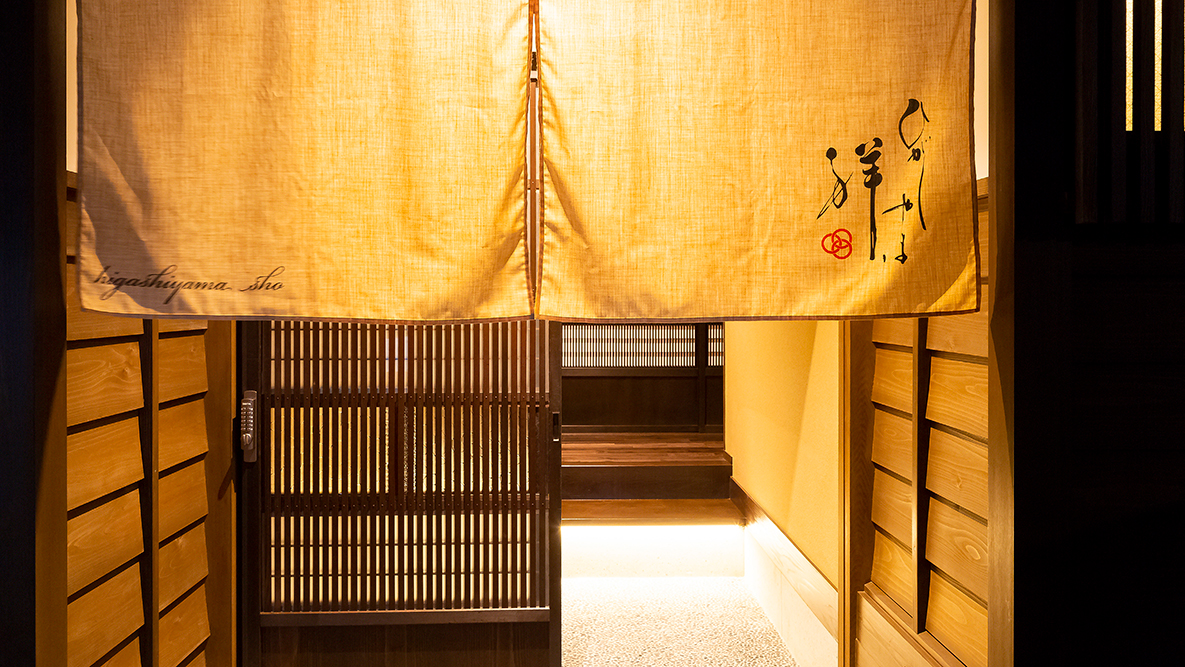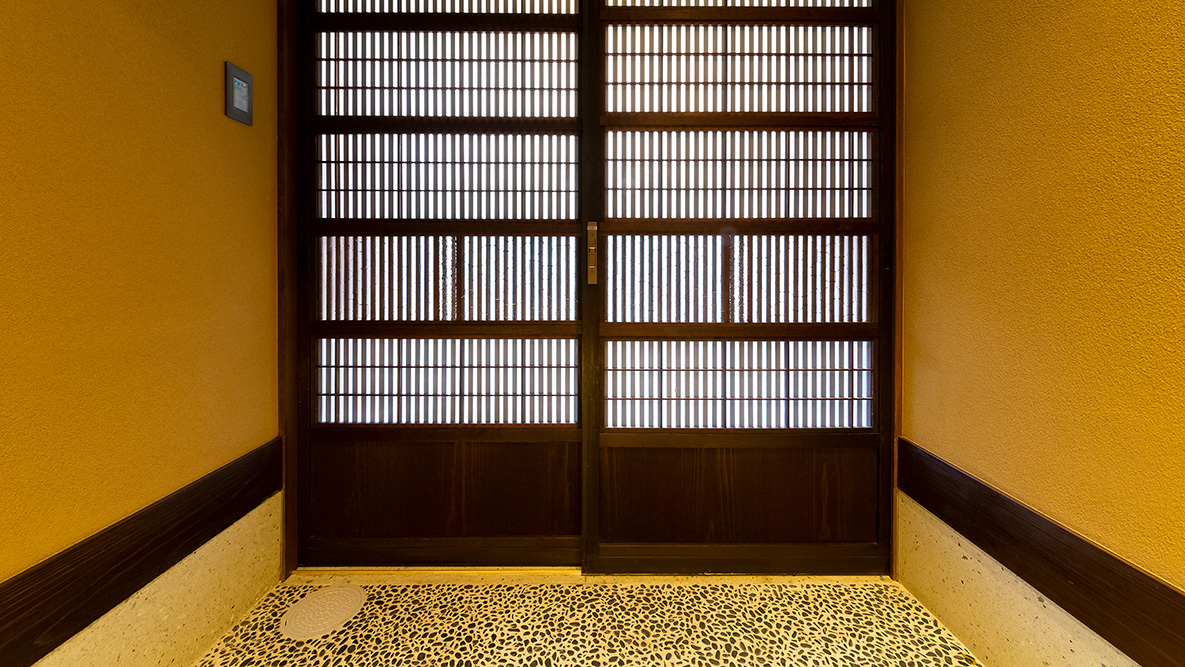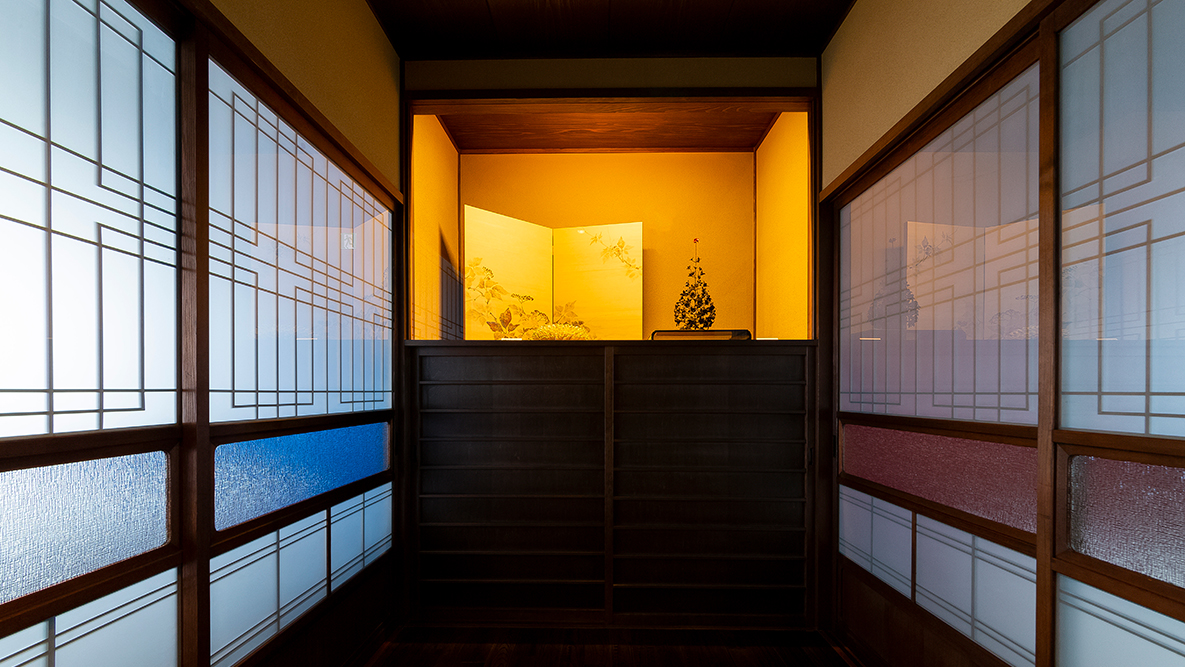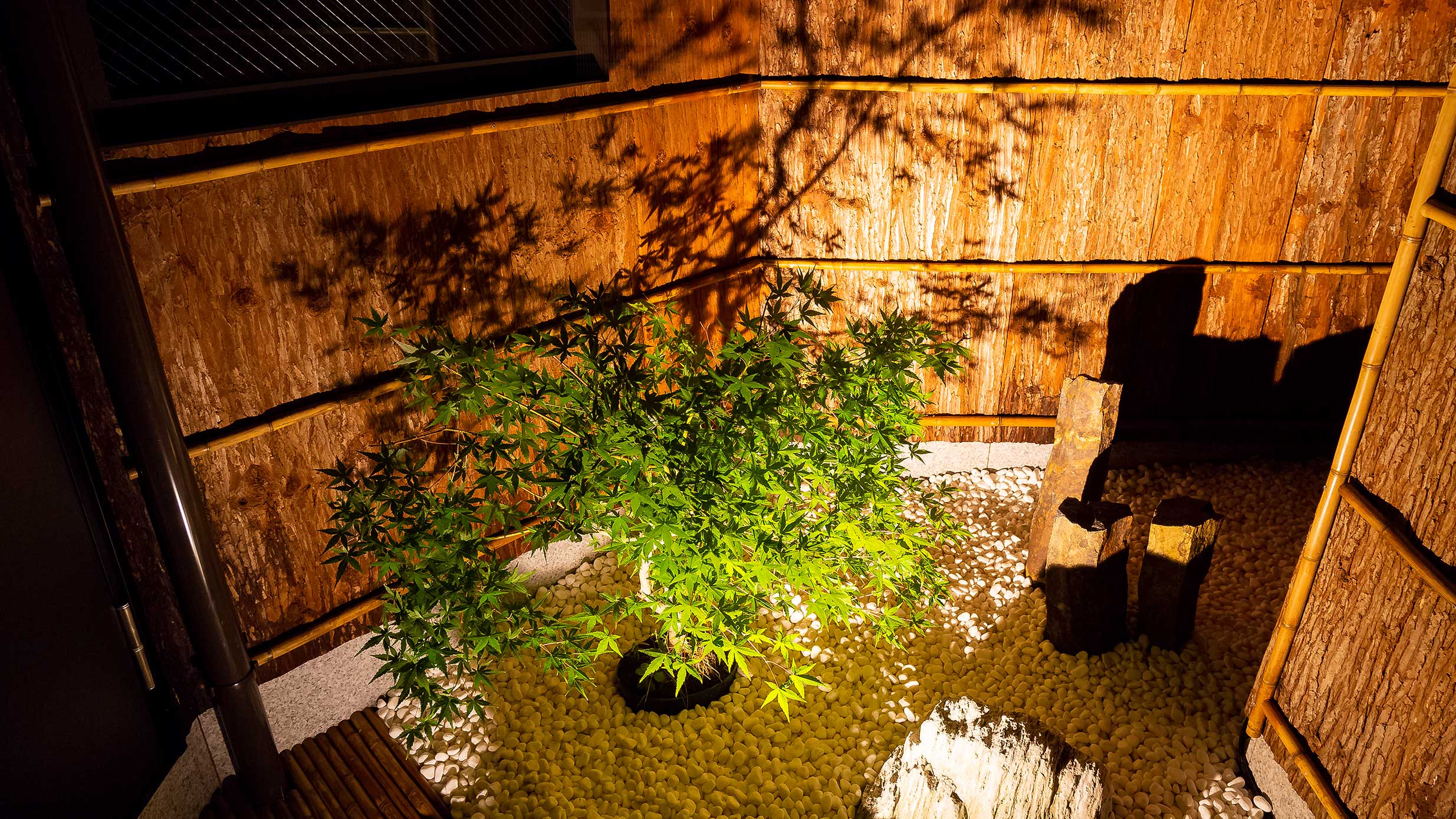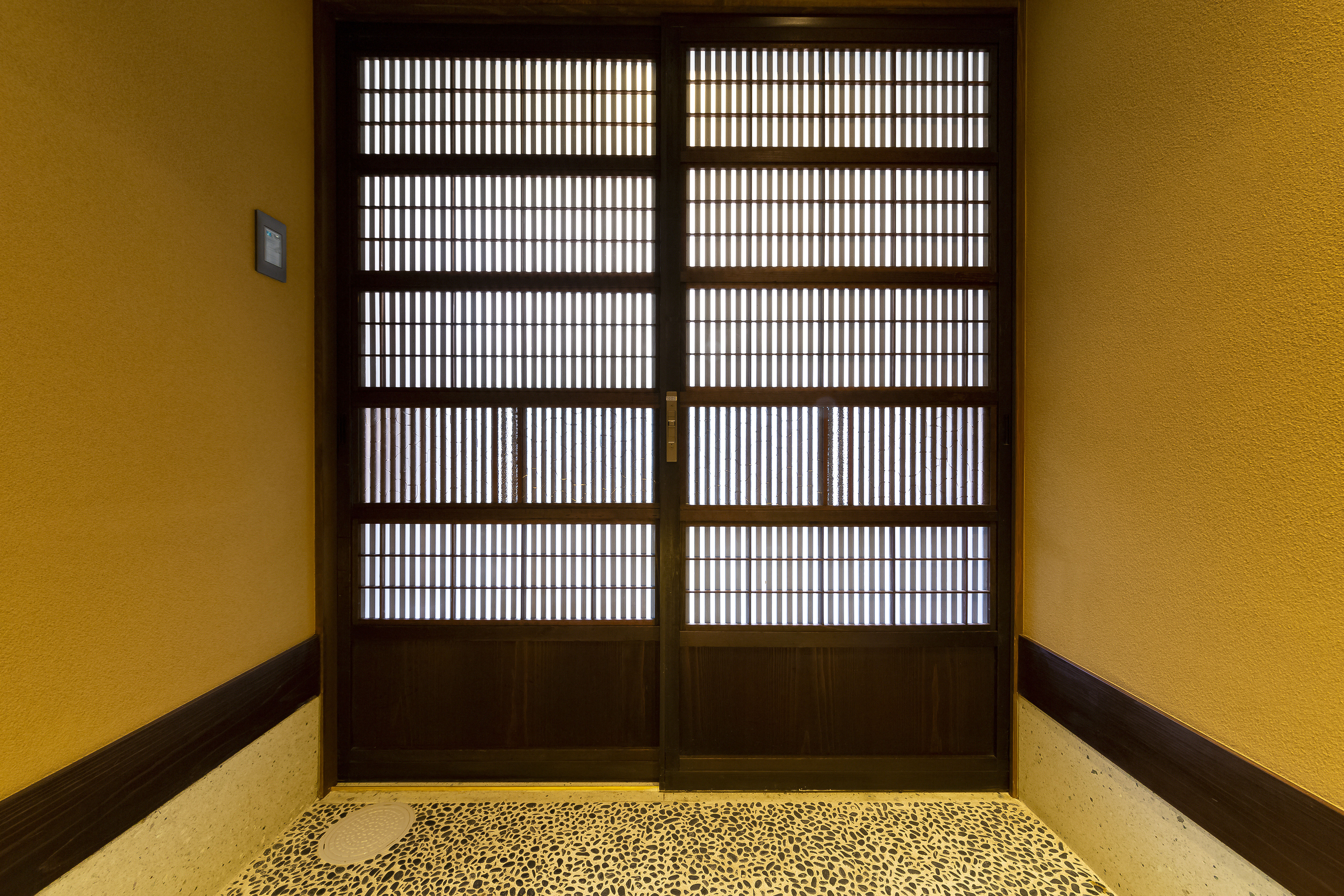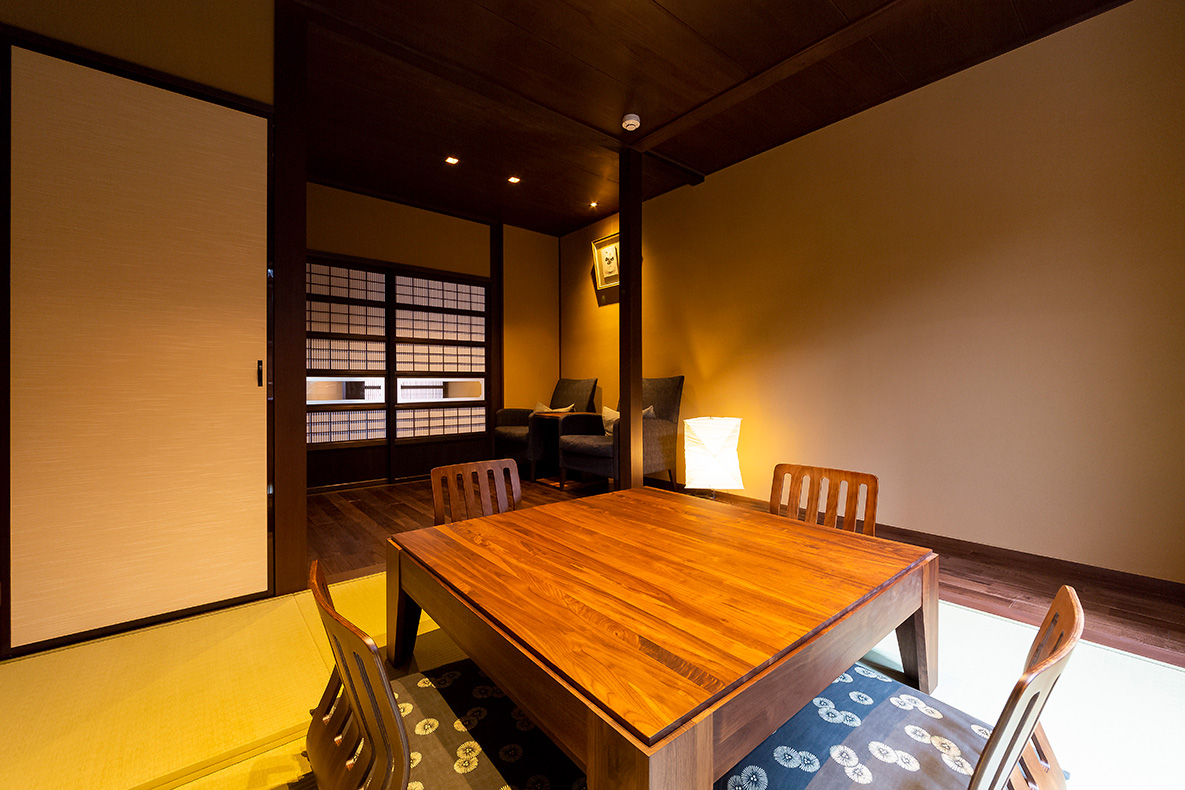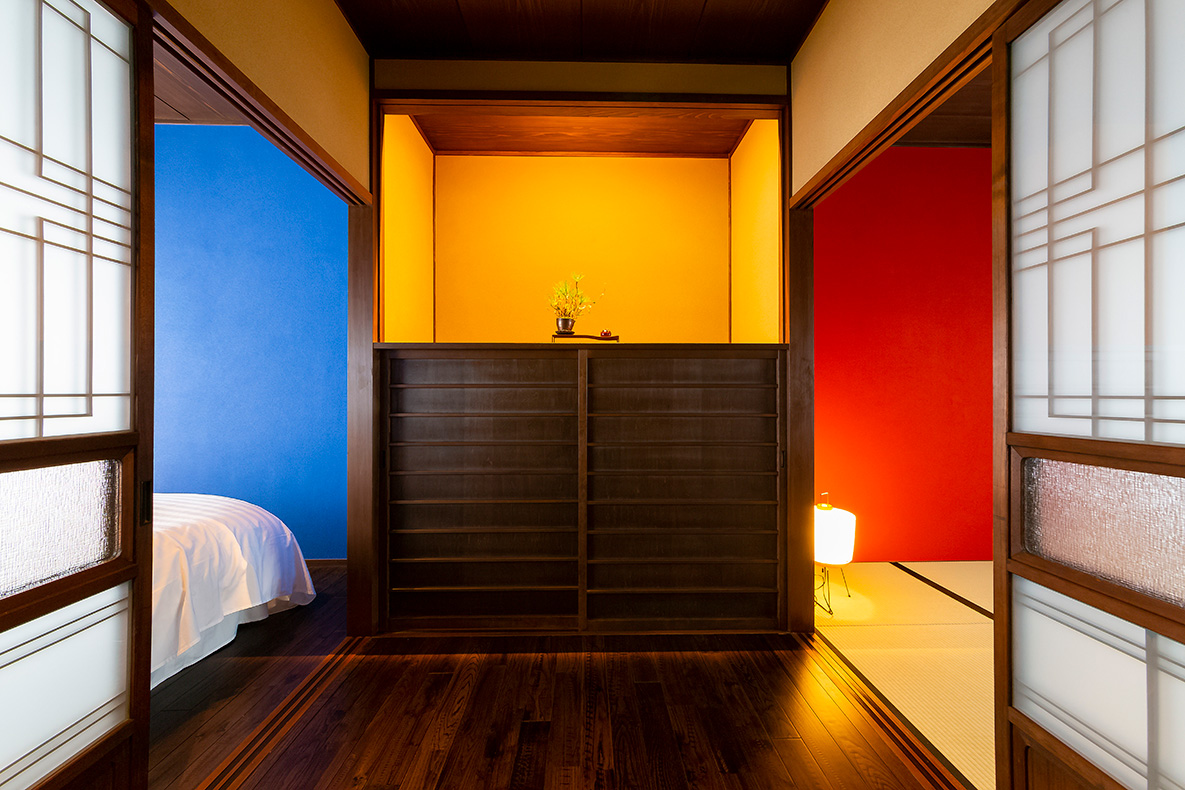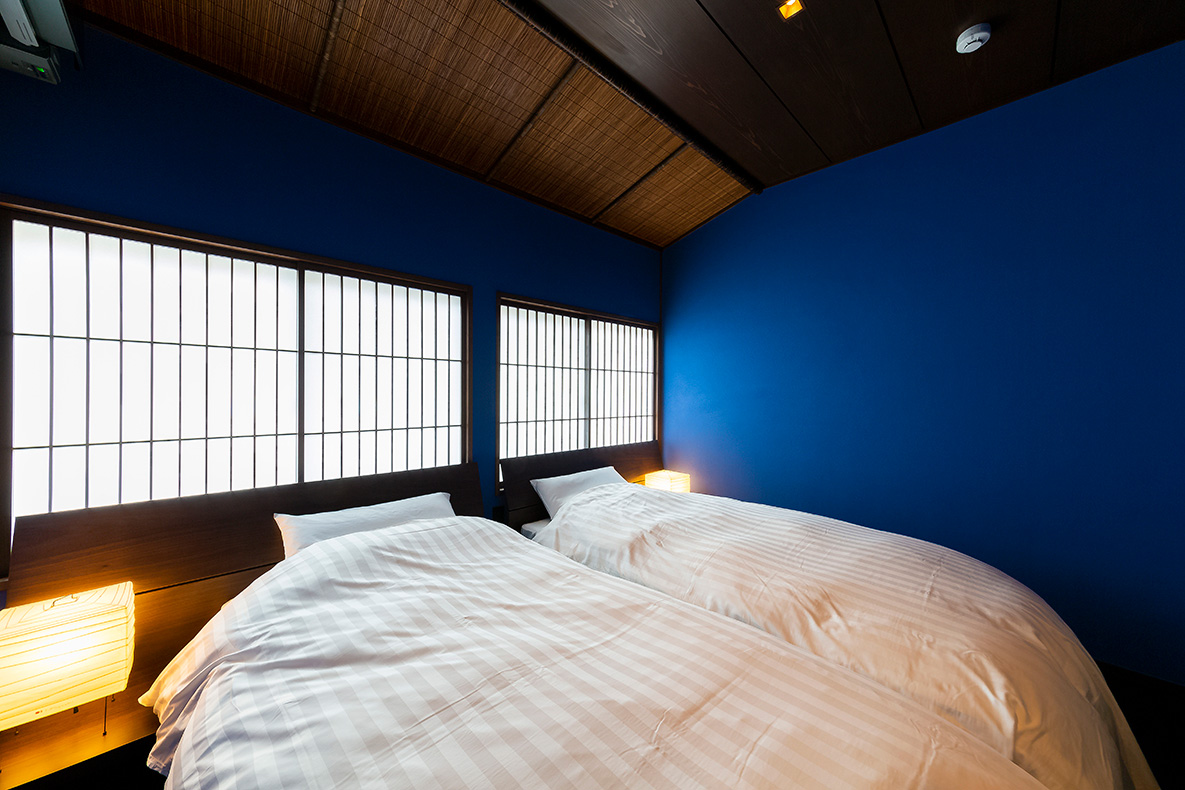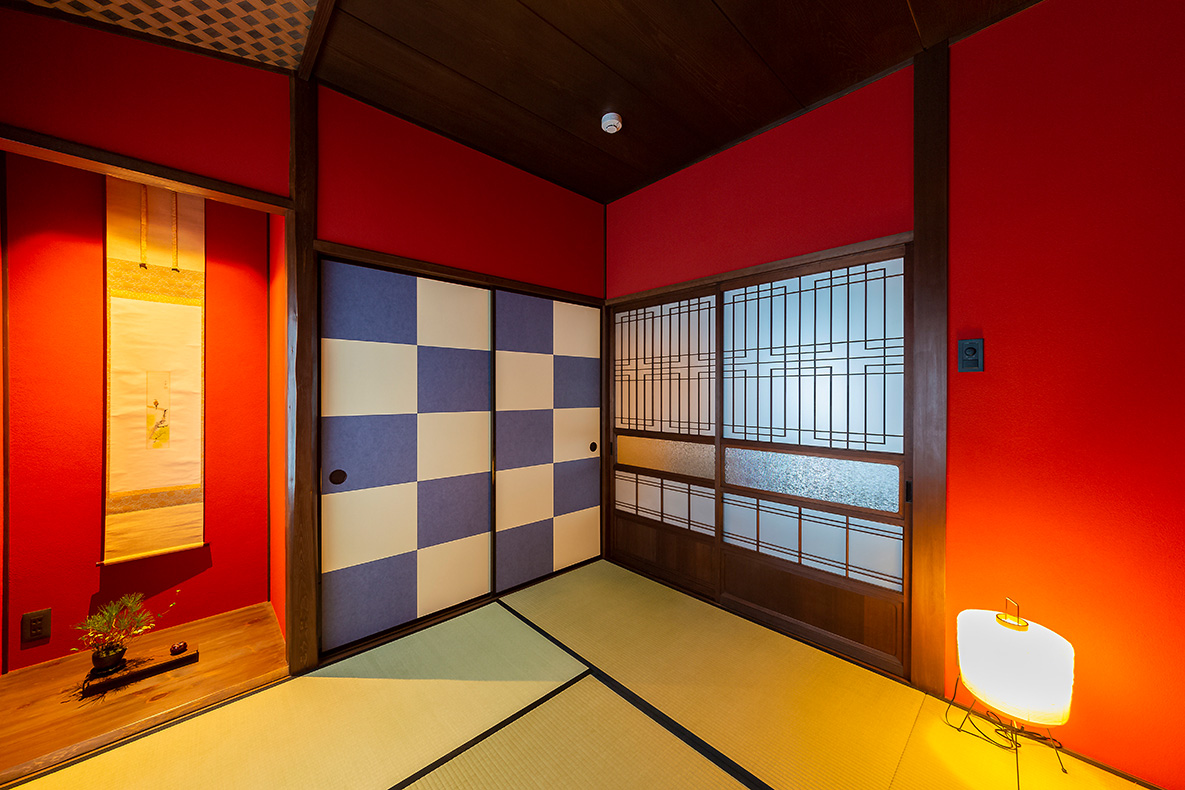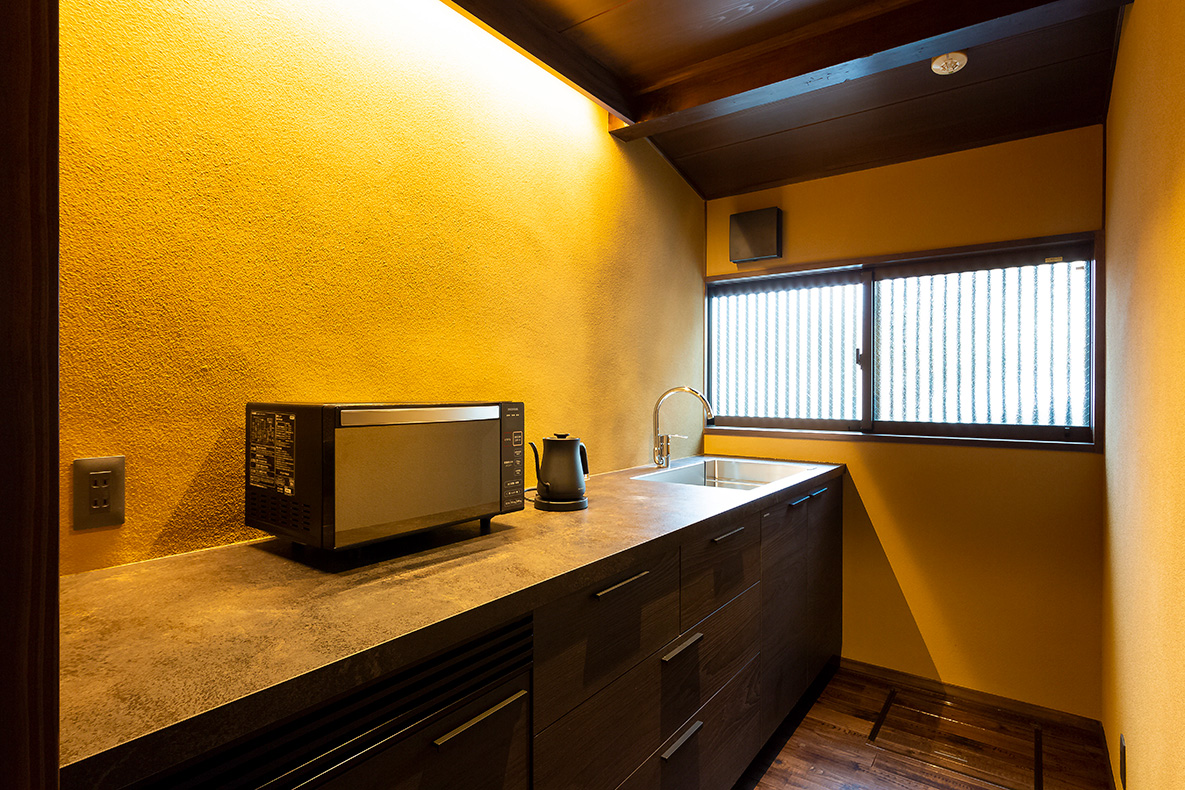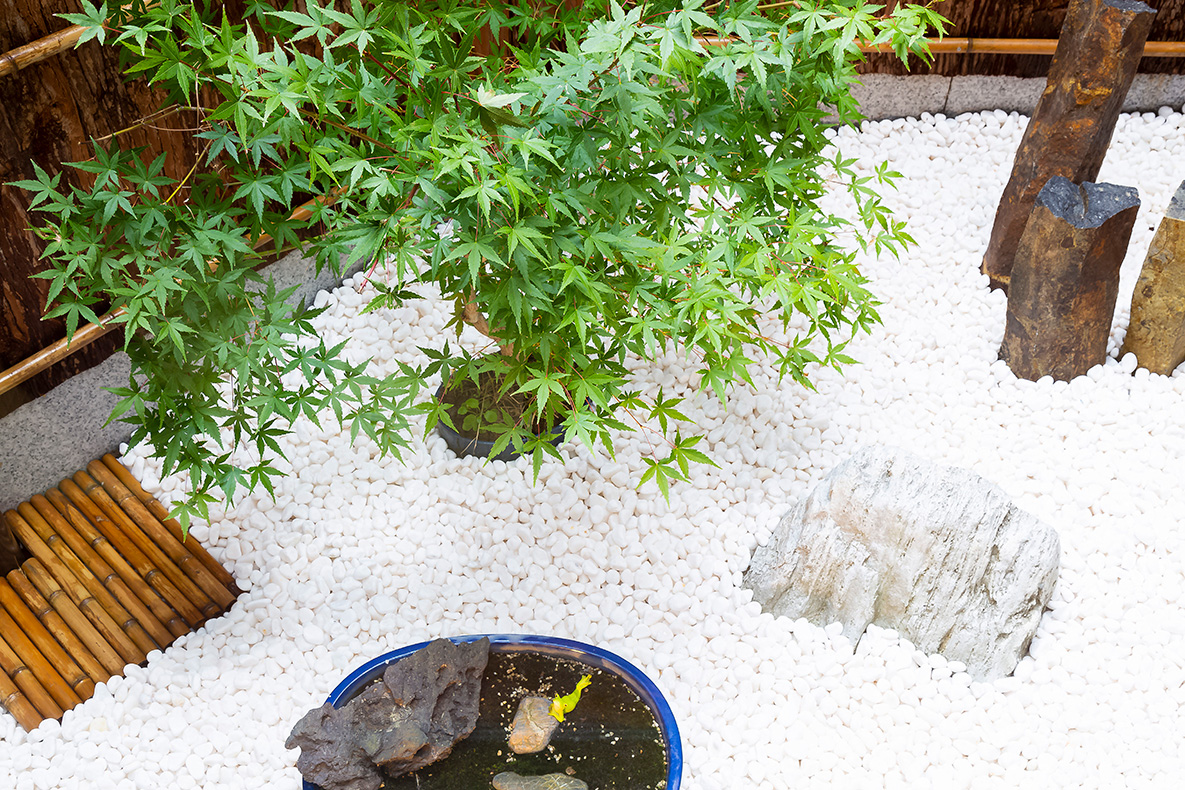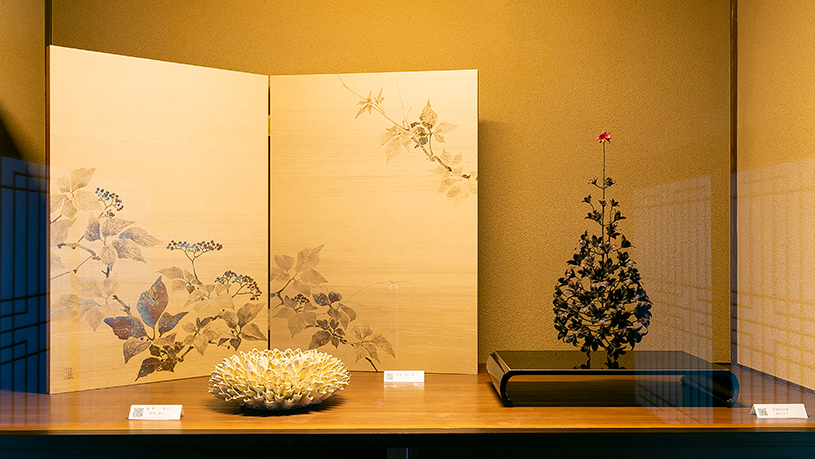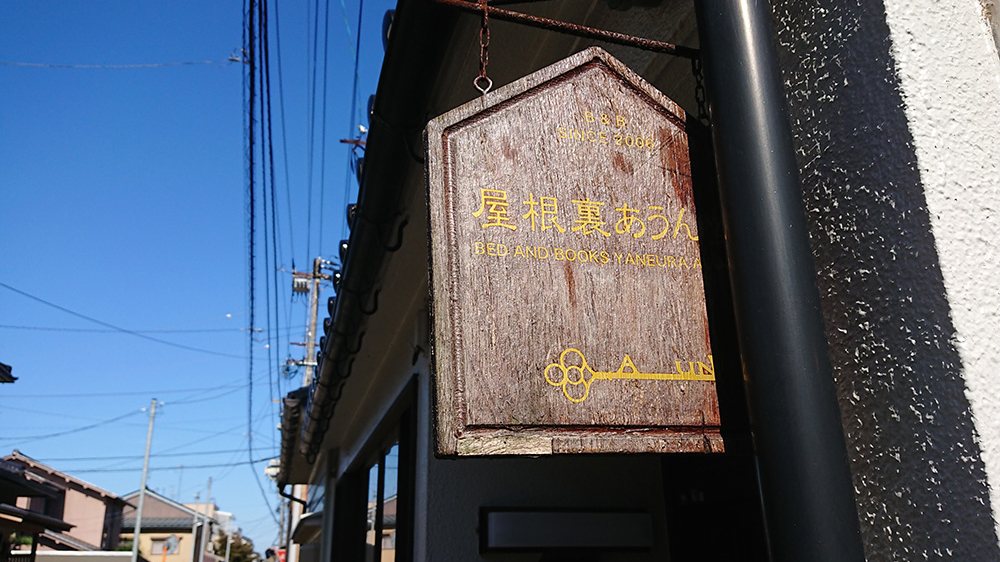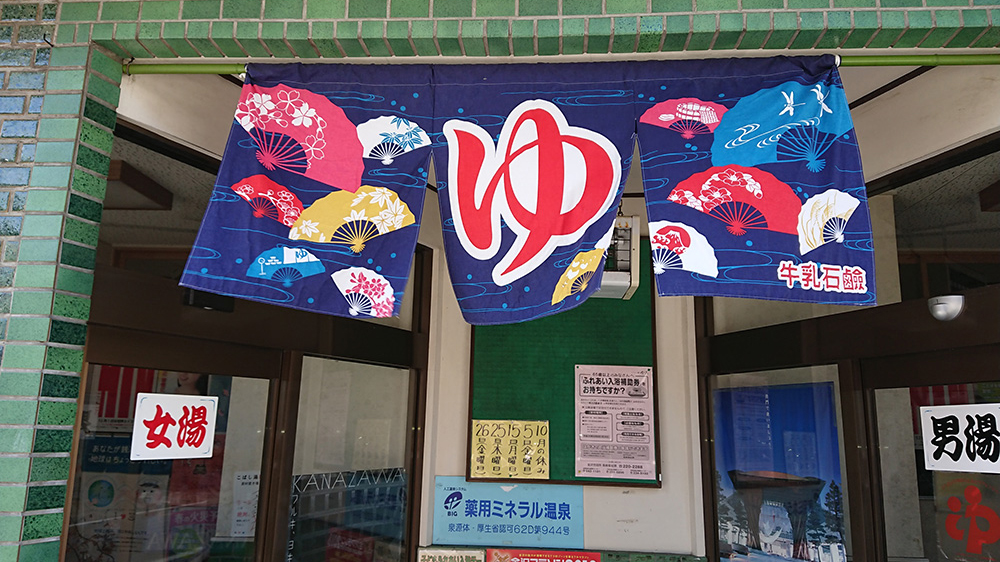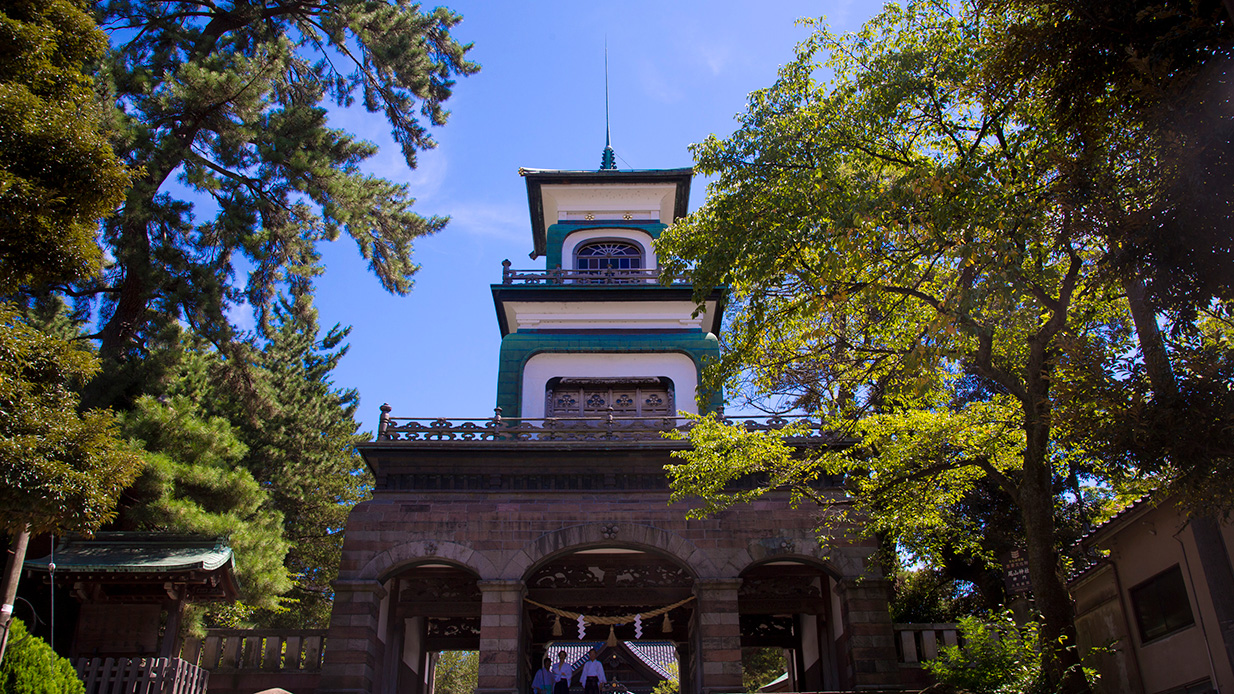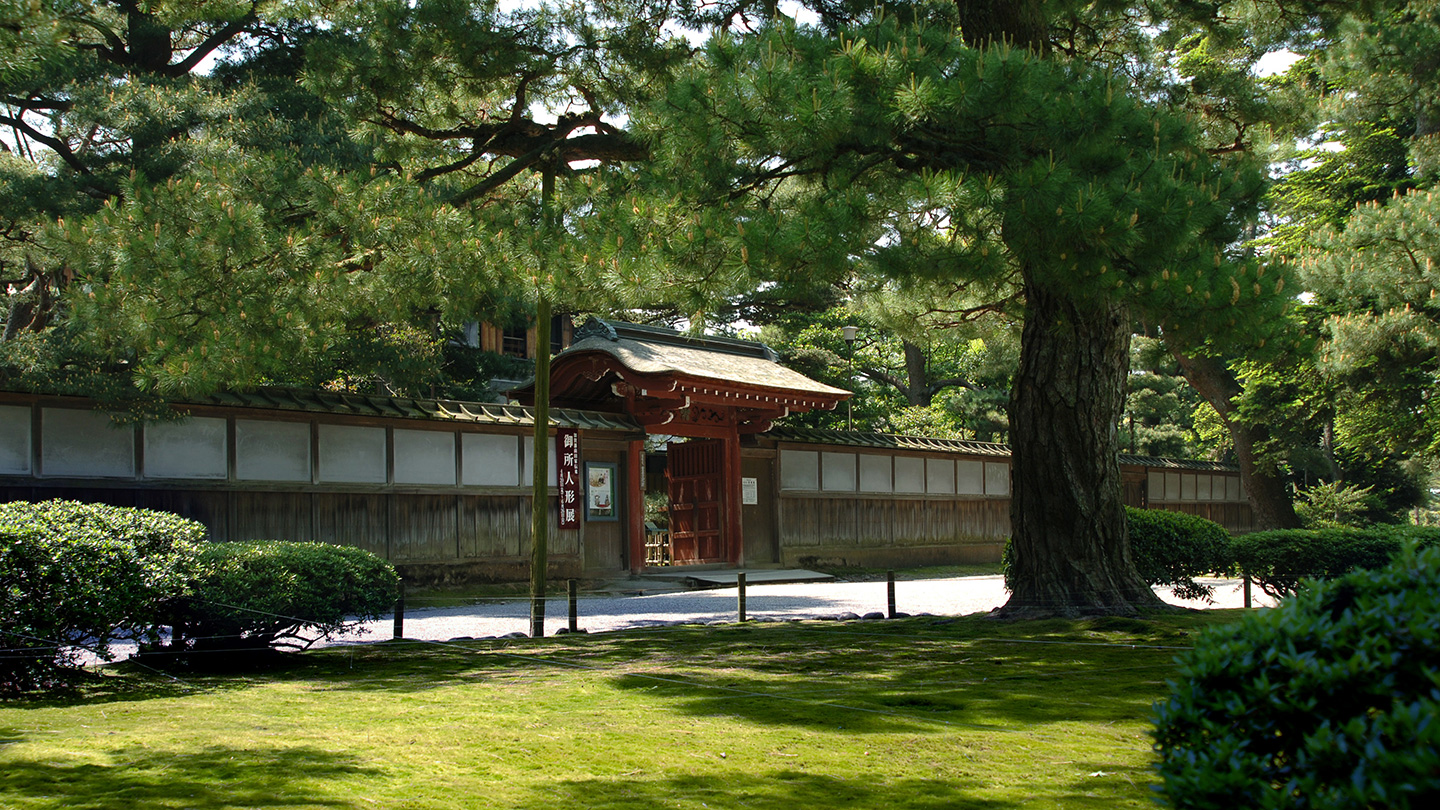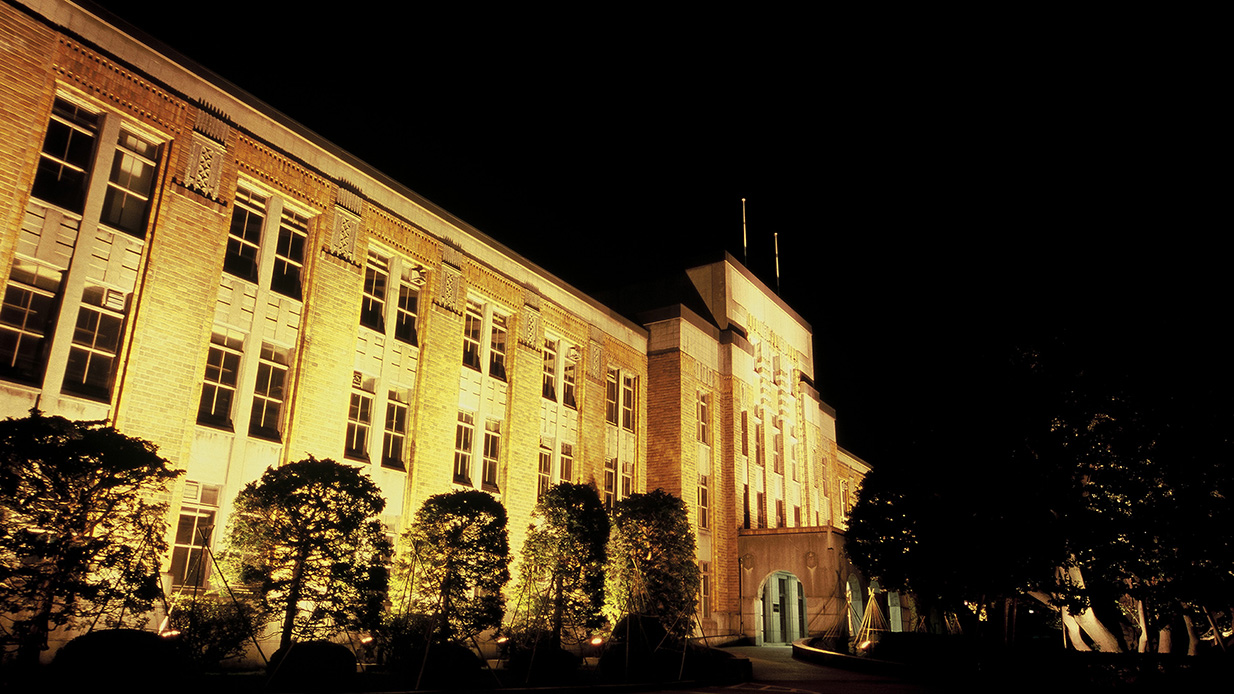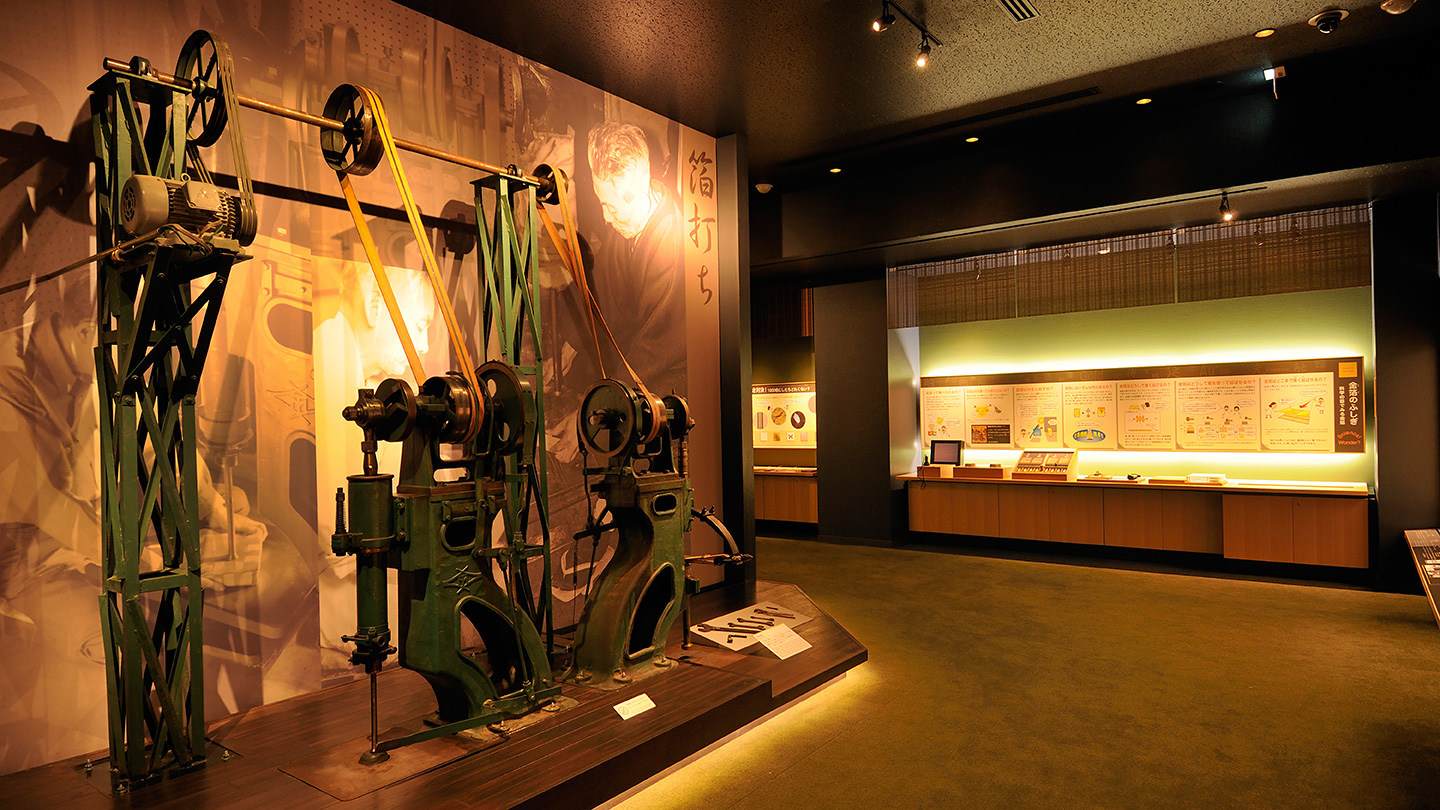Time & space intertwined with the culture of Kanazawa’s Higashiyama district.
“Higashiyama Sho,” is a traditional lodging house where guests rent the entire house, so there is no reception desk. Our ideal form is for guests to be able to relax freely without constraint, as if they are in their second home, and for them to be able to fully enjoy their time and space in Higashiyama naturally. This is our guest house’s concept of hospitality.
A guest house where you could spend comfortably at a single site.
Rooms
Facilities designed to enable guests to relax and savor traditional Japanese aesthetics
Staying in style at “Higashiyama Sho,”
Experience the historical atmosphere of Chaya Old Town at your leisure.
Higashi Chaya Old Town and Kazue-machi Chaya Old Town—these two historical districts lie within a five-minute walk from our guest house, across the Asanogawa River. As you walk slowly along the stone-paved streets, you can enjoy the enchanting experience of feeling as if you are part of the streetscape.
Tracing the history of Kaga culture
Places to see in the neighborhood
Tracing the history of Kaga culture
The guest house’s neighborhood has many interesting places to see, beginning with Chaya Old Town and Kenrokuen Garden but also including food, architectural structures, and art that are unique to this area. Visit these places to encounter the history and culture of Kaga.
Courtesy of Kanazawa City
Kanazawa Castle
Built in 1583 by Maeda Toshiie, head of the Maeda clan, Kanazawa Caste was the symbol of the wealth of the Kaga domain. This wood-frame castle boasts the largest size of all the castles that were restored from the Meiji Period (1868-1912) onward. The castle grounds include Gyokuseninmaru Garden, a traditional Japanese strolling garden, and the famous Kenrokuen Garden and other sights can been seen from the remains of the castle’s Ushitora and Tatsumi turrets.
Courtesy of Kanazawa City
Omicho Market
Known widely as the “Kitchen of Kanazawa,” the Omicho Market is a famous market where local specialties sustaining the local food culture are sold, such as Kaga vegetables, fresh seafood, etc. The market has a long history, dating back to 1721, when it was established to supply food for the Maeda clan. The market also has many food stalls where visitors can sit down and enjoy delicious seafood rice bowls and other local delicacies, making the market a popular gourmet spot among tourists.
Courtesy of Kanazawa City
21st Century Museum
Opened in 2004, this art museum exclusively handles contemporary art. Characterized by its round glass walls, the museum building was designed by international architectural unit SANAA and is affectionately nicknamed MARUBII. Also located nearby are the Ishikawa Modern Literature Museum and the Kanazawa Noh Museum, and so the area is known as Kanazawa’s cultural zone.
Courtesy of Kanazawa City
Kanazawa Station Tsuzumimon
In front of the East Exit of Kanazawa Station stands the Montenashi Dome, a glass and aluminum building bursting with a sense of openness. Pass through this building and you will arrive at the Tsuzumimon Gate. With pillars rising 13.7 m high, the gate was constructed in the image of the hand drums used by the Hosho School of Noh theater. Installed in 2005, the gate has become a new symbol of Kanazawa.
Courtesy of Kanazawa City
Higashi Chaya and Kazue-machi
With rarely seen old-time teahouse-style buildings lining the streets, Chaya Old Town has been drawing more and more attention in recent years as a sightseeing spot. The stone-paved streets of Higashi Chaya Old Town are lined on both sides with buildings decorated with red latticework. Alongside the Asanogawa River is Kazue-machi Chaya Old Town, which was also the hometown of literary master Izumi Kyoka. The fantastical sight of light reflecting off the stone-paved streets at nighttime results in a streetscape unique to Chaya Old Town.
Courtesy of Kanazawa City
Kenrokuen Garden
Located next to Kanazawa Castle, Kenrokuen profoundly preserves relics of the Kaga domain’s history of wealth and prosperity, which was shaped by generations of feudal lords. Within the garden grounds are the Kasumigaike pond, Sazaeyama hill, Neagarimatsu, and a teahouse, and it is possible to stroll around the garden while enjoying the seasonal changes of the landscape. Kenrokuen is one of Japan’s three most famous traditional Japanese-style gardens.


